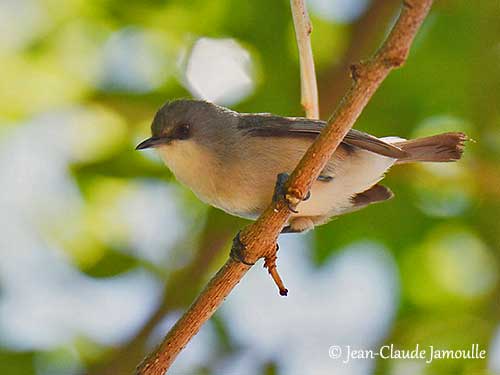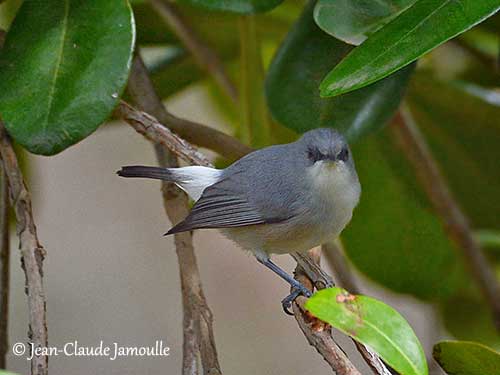
Fr: Zostérops gris
Ang: Mauritius Grey White-eye
All: Mauritius-Graubrillenvogel
Esp: Anteojitos gris de Mauricio
Nd: Grijze Mauritiusbrilvogel
Sd: gråvit glasögonfåge
Photographers:
Jean Michel Fenerole
Photos d’Oiseaux du monde
Jean-Claude Jamoulle
A la rencontre des Oiseaux
Alan & Ann Tate
AA Bird Photography
Text by Nicole Bouglouan
Sources:
HANDBOOK OF THE BIRDS OF THE WORLD Vol 13 by Josep del Hoyo-Andrew Elliot-Jordi Sargatal - Lynx Edicions – ISBN: 9788496553453
The Birds of Africa: Volume VIII: The Malagasy Region: Madagascar, Seychelles, Comoros, Mascarenes - Par Roger Safford, Frank Hawkins – ISBN: 1408190494, 9781408190494- Editeur: A&C Black, 2013
Birds of Madagascar and the Indian Ocean Islands Par Roger Safford, Adrian Skerrett, Frank Hawkins – ISBN: 1472924118, 9781472924117- Editeur: Bloomsbury Publishing, 2015
OISEAUX des ÎLES DE L’OCÉAN INDIEN De Ian Sinclair – Editeur : Penguin Random House South Africa, 2013 – ISBN : 1775840727, 9781775840725 - 263 pages
Home page
Page Passeriforme Order
Mauritius Grey White-eye
Zosterops mauritianus
Passeriformes Order – Zosteropidae Family
INTRODUCTION:
The Mauritius Grey White-eye is endemic to Mauritius where it occurs in wooded habitats with trees and shrubs. It feeds mainly on nectar and insects. This species may produce several broods following nest failures. It sometimes nests in loose semi-colonial groups.
The “grey white-eye” species present in the Mascarene have been treated as races of Zosterops borbonicus from Reunion. But genetic and morphological studies indicate significant divergences between Mauritius and Reunion populations, and the species split is justified.
The Mauritius Grey White-eye has restricted range but it is described as common, especially in native habitat. The species is not globally threatened.

DESCRIPTION OF THE BIRD:
Biometrics:
Length: 11-12 cm
Weight: M: 7,5-10 g – F: 7,5-11 g
The Mauritius Grey White-eye has grey upperparts, although lower mantle, scapulars and back show variable olive-brown wash. Rump and uppertail-coverts are buffy-white, whereas the tail is dark grey-brown. On the upperwing, the flight-feathers are dark grey-brown with paler edges, but tertials are mostly brownish-grey. The alula is black. The upperwing-coverts are grey but darker on primary coverts.
On the underparts, chin and throat are creamy-white but the breast is pale grey. Flanks and body sides are olive-brown. Rest of underparts is greyish-white.
On the head, forehead, crown, nape, ear-coverts and neck sides are grey, but the ear-coverts are slightly washed pale brown. The lores are dark grey. This species does not show the conspicuous white eyering.
The bill is blackish with greyer cutting edges and paler base of mandible. The eyes are brown to brownish red. Legs and feet are blackish grey.
Male and female are similar.
The juvenile is more olive-brown above, and the underparts are washed olive-yellow. The eyes are pale grey-brown during the first year.
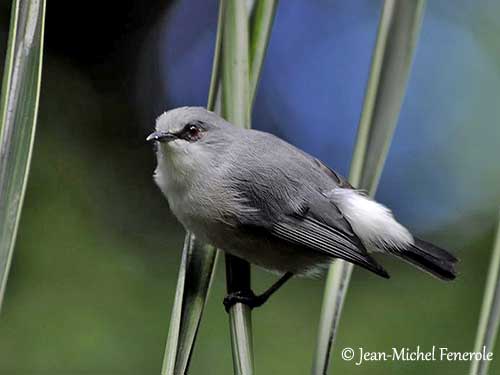
RANGE:
The Mauritius Grey White-eye is found on Mauritius. It is absent on North, but it occurs on some islands including Ile Mangenie, Ile d’Ambre and Ile aux Benitiers.
HABITAT:
The Mauritius Grey White-eye frequents wooded habitats including native forests, second growths and lowland plantations. The species occurs from sea-level to the highest peak at 824 metres of elevation.
CALLS AND SONGS: SOUNDS BY XENO-CANTO
The Mauritius Grey White-eye commonest calls is a soft, slightly warbled “p-tree” given by several birds while feeding or flying, but it is also used to maintain flock cohesion. Higher and lower notes are sometimes uttered alternately, running up and down scale lasting 10 to 30 seconds.
The song usually follows series of contact calls and may include mimicry of other bird species. The song is a whistled warbling given at dawn and around dusk.
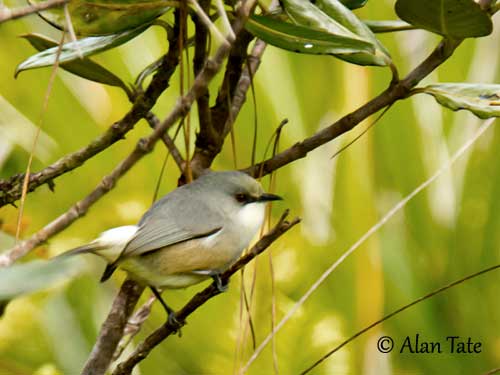
BEHAVIOUR IN THE WILD:
The Mauritius Grey White-eye feeds mainly on nectar and insects. Insect diet includes Hemiptera, Orthoptera and Lepidoptera.
The nectar is taken by probing, or sometimes by puncturing the base of the corolla. The usual visited flowers are both introduced and native species, and up to at least 26 flower species are recorded.
It usually forages in small groups of 3-6 individuals, but it can be seen alone or in pairs, and it occasionally joins flocks or mixed-species flocks of up to 25 or more outside breeding season.
Insects are caught by gleaning from vegetation, or while foraging along twigs, on bark or rotten wood on the ground. Some observations report flycatching too.
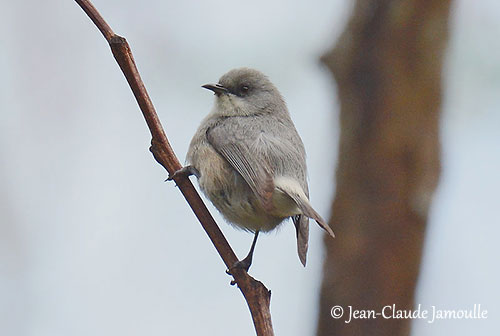
The Mauritius Grey White-eye may nest in loose semi-colonial groups with nests 5-10 metres apart, but they are not territorial and do not perform nest defence.
During the courtship displays, the white rump and axillaries are enhanced by adapted postures. Both adults share the nesting duties, but helpers feeding young are reported.
The Mauritius Grey White-eye is resident and sedentary on Mauritius.
The flight is weak and undulating, due to the short, rounded wings.
REPRODUCTION OF THIS SPECIES:
The breeding season occurs between September and March, with peak in October-December.
The Mauritius Grey White-eye builds a thin but robust structure. The nest-building lasts 4-5 days. It is made of moss, lichen, leaves or rootlets, and also dry grass according to the location. These materials are held together with spider webs. The cup is lined with fine hair. This structure is attached to twigs and hidden among foliage, between 4 and 8 metres above the ground, mainly in tree of genus Pinus when available.
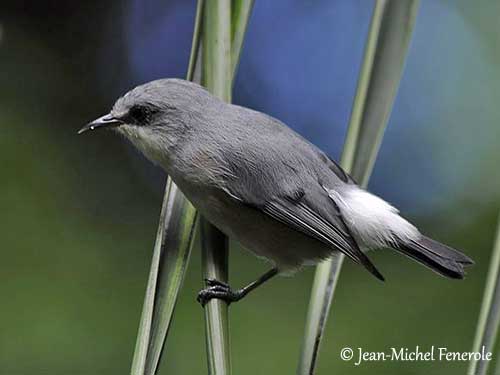
The female lays 2-3 pale blue eggs and both adults incubate during 12-13 days. The young fledge 10-14 days after hatching, but they still depend on adults for food for two weeks.
The nesting success is fairly low, due to predation by Mauritius Bulbul and probably Red-whiskered Bulbul too.
The Mauritius Grey White-eye may produce several broods, especially following nest failure.
PROTECTION / THREATS / STATUS:
The Mauritius Grey White-eye has restricted range but the species is described as common and widespread, with higher densities in wooded habitats, with around 150 pairs/km².
The global population is roughly estimated at 34,000/68,000 pairs.
The main predator is the Mauritius Kestrel, but both Mauritius Bulbul and Red-whiskered Bulbul may cause nest losses.
However, the Mauritius Grey White-eye is not globally threatened, and currently evaluated as Least Concern.
